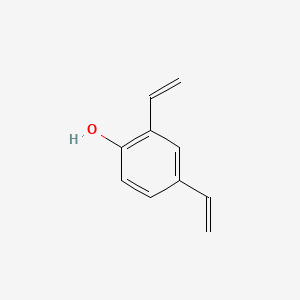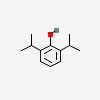Styrenated phenol CAS# 61788-44-1
Western Reserve Chemical, a premiere supplier of styrenated phenol applications both distyrenated and tristyrenated phenol, leads the market in manufacturing and distributing this plastic/rubber antioxidant. It is FDA approved for rubber product used in contact with food. Westco phenols are mostly used in elastomers and SBR
Western Reserve Chemical, or wrchem, as we refer to them is an old client for whom we just launched a new, mobile friendly website. It’s a WordPress site that allows wrchem’s staff to easily update their products. We are currently performing SEO/SEM and this blog article is designed to promote their styrenated phenol.
Wrchem is one of our favorite clients and we’ve been working with them for many, many years. They offer a broad range of chemicals and additives for rubber and plastics.
Styrenated Phenol (SP) is a clear, yellow, non-staining and non-discoloring anti-oxidant for dry rubber and latex compounds. It is a viscous liquid and is supplied in 3 grades Mono, Di or Tri styrenated phenol, although wrchem only offers Di and Tri. Styrenated phenol applications include:
- rubber sheets
- rubber tubing
- rubber straps
- latex products such as rubber gloves
- conveyor belt covers
- industrial gloves
- surgical gloves
- latex balloons
-
2D Structure
-
3D Conformer
-
Names and Identifiers
-
Computed Descriptors
-
IUPAC Name
2,4-bis(ethenyl)phenol -
InChI
InChI=1S/C10H10O/c1-3-8-5-6-10(11)9(4-2)7-8/h3-7,11H,1-2H2 -
InChI Key
GZGSEMRMKBBQGA-UHFFFAOYSA-N -
Canonical SMILES
C=CC1=CC(=C(C=C1)O)C=C
-
-
Molecular Formula
-
Other Identifiers
-
CAS
61788-44-161345-72-0 -
EC Number
-
UNII
7X7JE9XCSI
-
-
Synonyms
-
Depositor-Supplied Synonyms
-
-
-
Chemical and Physical Properties
-
Computed Properties
Property Name Property Value Molecular Weight 146.189 g/mol Hydrogen Bond Donor Count 1 Hydrogen Bond Acceptor Count 1 Rotatable Bond Count 2 Complexity 151 CACTVS Substructure Key Fingerprint AAADccBwIAAAAAAAAAAAAAAAAAAAAAAAAAAwAAAAAAAAAAABAAAAGgAACAAADASAmAAwBoAAAgCAAiBCAAACAAAgIAAIiAAGCIgIJiKCERKAcAAkwBEImAeAwGAOIAACAAAIAABAAAQAABAAAAAAAAAA Topological Polar Surface Area 20.2 A^2 Monoisotopic Mass 146.073 g/mol Exact Mass 146.073 g/mol XLogP3-AA 3.1 Compound Is Canonicalized true Formal Charge 0 Heavy Atom Count 11 Defined Atom Stereocenter Count 0 Undefined Atom Stereocenter Count 0 Defined Bond Stereocenter Count 0 Undefined Bond Stereocenter Count 0 Isotope Atom Count 0 Covalently-Bonded Unit Count 1 -
Experimental Properties
-
Physical Description
Liquid
-
-
-
Related Records
-
Related Compounds with Annotation
-
Related Compounds
Similar Compounds 3805 records Similar Conformers 2921 records -
Substances
-
Related Substances
Same 14 records -
Substances by Category
-
-
-
Chemical Vendors
-
Use and Manufacturing
-
Uses
-
Industry Uses
- CBI
- Intermediates
- Surface active agents
-
-
-
Safety and Hazards
-
Hazards Identification
-
GHS Classification
Signal: Warning
GHS Hazard Statements
Aggregated GHS information from 14 notifications provided by 293 companies to the ECHA C&L Inventory. Each notification may be associated with multiple companies.
H315 (16.38%): Causes skin irritation [Warning Skin corrosion/irritation] H317 (12.97%): May cause an allergic skin reaction [Warning Sensitization, Skin] H411 (74.4%): Toxic to aquatic life with long lasting effects [Hazardous to the aquatic environment, long-term hazard] H413 (19.45%): May cause long lasting harmful effects to aquatic life [Hazardous to the aquatic environment, long-term hazard] Information may vary between notifications depending on impurities, additives, and other factors. The percentage value in parenthesis indicates the notified classification ratio from all companies. Only Hazard Codes with percentage values above 10% are shown.Precautionary Statement Codes
P261, P264, P272, P273, P280, P302+P352, P321, P332+P313, P333+P313, P362, P363, P391, and P501
(The corresponding statement to each P-code can be found here.)
-
-
-
Patents
-
Depositor-Supplied Patent Identifiers
-
-
Classification
-
Ontologies
-
WIPO IPC
-
ChemIDplus
-
-
-
Information Sources
-
Phenol, styrenated
https://chem.nlm.nih.gov/chemidplus/sid/0061788441
2,4-Divinylphenolhttps://chem.nlm.nih.gov/chemidplus/sid/0061345720
ChemIDplus Chemical Information Classification -
Phenol, styrenated
-
Phenol, styrenatedPhenol, styrenated
https://echa.europa.eu/information-on-chemicals/cl-inventory-database/-/discli/details/96768
-
PubChemData deposited in or computed by PubChem
-
International Patent Classification
-
|
|||||||||||||||||
|
Featured client/products:
Glass Floors | Semi Truck Ramp | Glass Blocks| SEO Services Near Me | Steel Yard Ramp | Ramp for Loading Dock | Glass Flooring | Loading Dock Ramps | Portable Yard Ramp | SEO Company Near Me | SEO Agency Akron | SEO Expert Near Me | Marketing Agencies Near Me | Marketing Agency Akron
Yard Ramps | Yard Ramp









